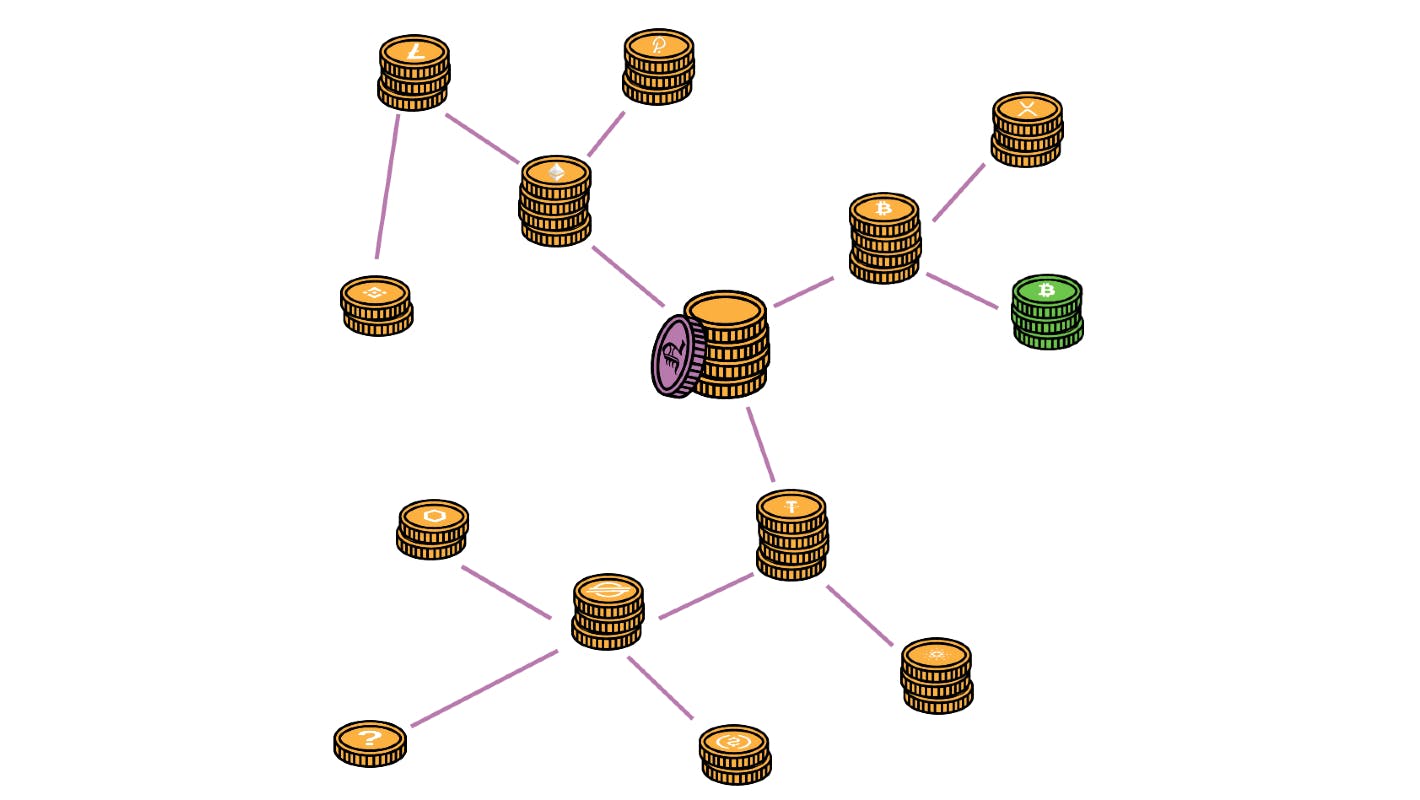#10 Legal Analysis of Chainlink (LINK)
March 31, 2021 | Max Atallah
Earlier in February we started our 12-part article series on cryptocurrencies and their legal framework within the EU and the US. Last time we wrote about Binance Coin, and now it is time for LINK – the native token of Chainlink, i.e., the world’s most widely used decentralized oracle network, combining external data sources with blockchain-based smart contracts.
Chainlink in a legal nutshell
Chainlink is a decentralized network of data providers, i.e., oracles. LINK is the native token of the Chainlink ecosystem, launched and developed by the San Francisco based fintech company SmartContract in June 2017. The core function of Chainlink is built on the oracles’ provision of external non-blockchain data (e.g., off-chain data), such as through different APIs, that can be transferred to and received by Chainlink smart contracts. The solution consisting of “real world” data exports to blockchain-based technologies is what gives the Chainlink ecosystem and the LINK token its value.
In Chainlink’s initial coin offering (ICO) held in September 2017, 1 billion LINK tokens where launched, raising 32 million USD in total. As the current circulating supply of LINK lands slightly over 416 million, the maximum supply remains capped at 1 billion. As Chainlink operates on the Ethereum blockchain, LINK is an ERC677 token, inheriting its functionality from the better known ERC20 token standard. According to the developers of Chainlink, the LINK token retains all functionalities of an ERC20 token and shall be able to be stored in ERC20-compatible wallets without any issues.
Simply put, the LINK token is used as fuel and a form of payment in the Chainlink ecosystem, keeping the decentralized oracle network running by rewarding its participants, such as data providers, node operators, and smart contract developers. That said, LINK is used as a currency within the ecosystem, through which network participants facilitate Chainlink’s main purpose, i.e., communication and data transfers between blockchain-based smart contracts and external data sources, e.g., off-chain data.
U.S. Regulation of LINK
According to the Financial Crimes Enforcement Network’s (FinCEN) interpretation, cryptocurrencies such as LINK fall within the Bank Secrecy Act’s scope of application. Although FinCEN does not consider cryptocurrencies as legal tender, it considers cryptocurrency exchanges being money transmitters, and thereby included in its jurisdiction.
As we have already mentioned in our earlier articles, it is hard to find a uniform regulatory approach to cryptocurrencies in the U.S. The legislation varies between states, and even federal authorities have different interpretation on the definition of “cryptocurrency”. The Securities and Exchange Commission (SEC) has been indicating that it considers certain cryptocurrencies to be securities, as witnessed lately in its somewhat peculiar proceedings against Ripple Labs Inc., including SEC’s attempt to apply the so-called Howey Test on cryptocurrencies despite the Howey Test having its origin in traditional investment contracts (e.g., securities).
Meanwhile the Commodities Futures Trading Commission (CFTC) encompasses cryptocurrencies to be commodities as described in the Commodity Exchange Act, whereas the Internal Revenue Service (IRS) sees cryptocurrencies as property and has issued tax guidance on the matter.
These inconsistent viewpoints make the U.S. cryptocurrency legislation unclear and leave cryptocurrencies in an ambiguous legal territory with various federal authorities claiming jurisdiction at the same time. The states of New York and Louisiana are examples of jurisdictions with their own tailored cryptocurrency license systems, being the legally strictest territories for crypto operators in the U.S.
EU Regulation of LINK
Within the EU, LINK has a clearer regulatory situation than in the U.S. as the EU cryptocurrency legislation is more coherent. As other altcoins, LINK falls within the scope of the EU Fifth Money Laundering Directive (5AMLD) and is considered a cryptocurrency.
As stated in the 5AMLD, virtual currencies are defined as a digital representation of value i) that is not issued or guaranteed by a central bank or a public authority, ii) is not necessarily attached to a legally established currency and does not possess a legal status of currency or money but is accepted by natural or legal persons as a means of exchange and iii) which can be transferred, stored, and traded electronically. Therefore, LINK is from a starting point subject to conventional EU regulation on customer due diligence, risk assessments, Fit & Proper as well as other applicable national legislation. Another question is naturally who the actual subject of the regulation is as LINK is, as most cryptocurrencies, decentralized.
Even if the EU Member States’ national legislation on cryptocurrencies differ slightly, it is from a longevity point of view recommendable to be proactive and follow the example of the stricter Member States and their ambitious level of maintaining and creating industry standard compliance. This said especially considering the upcoming EU cryptocurrency regulation that is going to unify and tighten the rules on crypto even further.

31.03.2021 MAX